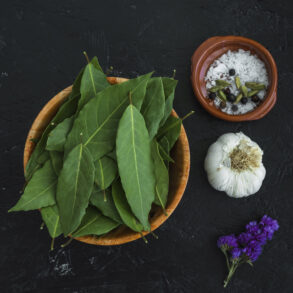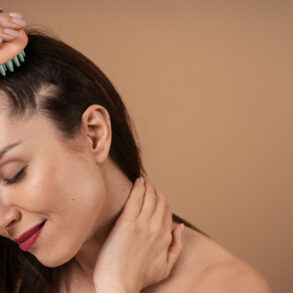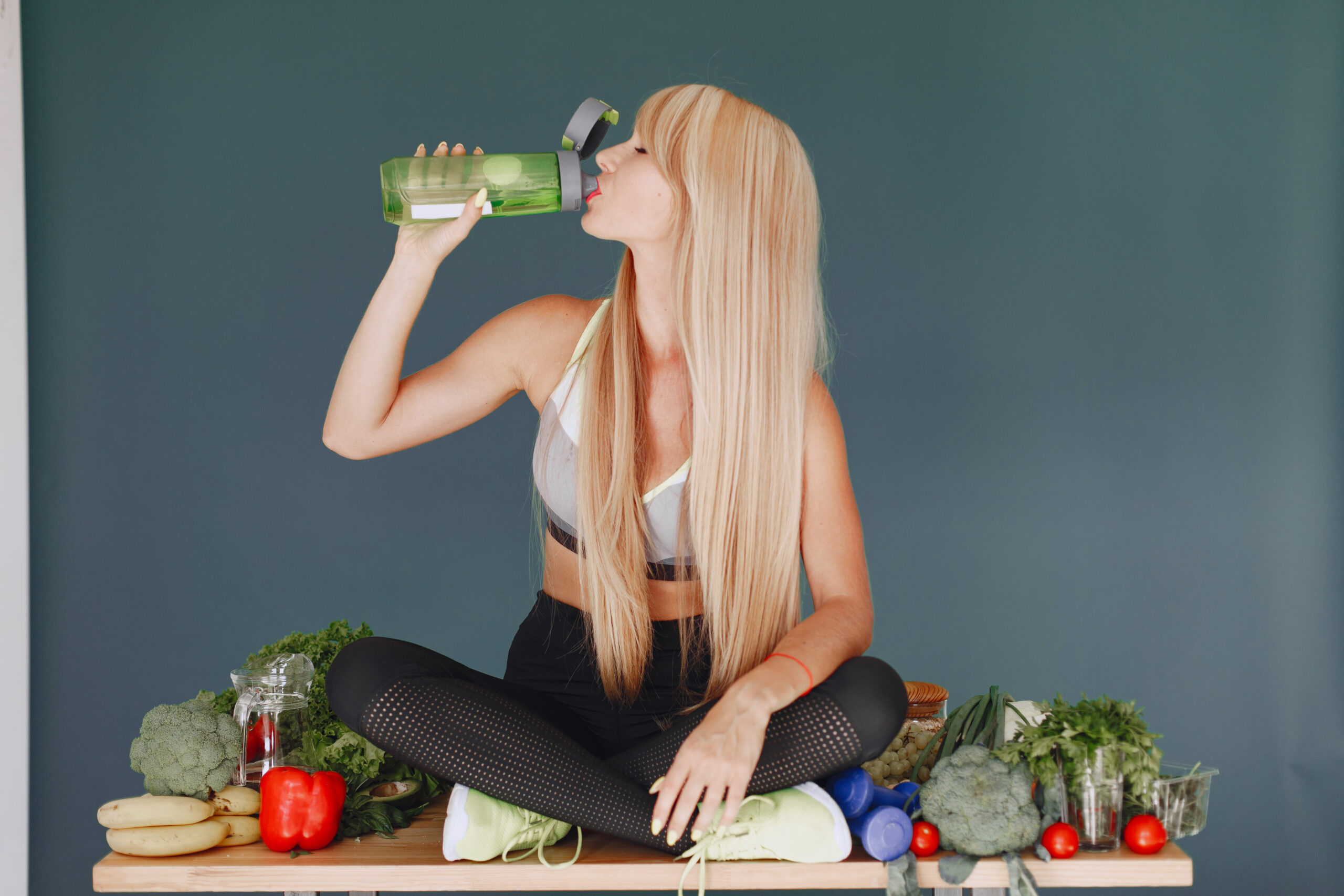In a country as deeply rooted in tradition and cultural wisdom as India, skincare advice is woven into the very fabric of daily life. Passed down through generations like precious heirlooms, this collective knowledge forms the bedrock of beauty and wellness rituals for millions.
From the comforting remedies suggested by grandmothers to the well-intentioned tips shared among friends, this oral tradition carries the weight of lived experience. While many of these practices are gems of timeless, empirical wisdom such as the use of turmeric for its anti-inflammatory properties or sandalwood for its cooling effects others are persistent, tenacious myths that can inadvertently sabotage skin health, waste money, and even cause long-term damage.
These beliefs, often rooted in a mix of anecdotal evidence, cultural norms, and outdated information, desperately need to be scrutinized under the rigorous, clarifying lens of modern dermatology and biochemical science.
This comprehensive article is dedicated to meticulously debunking the top 10 skin myths Indians still believe.
We will move beyond surface-level explanations and delve into the underlying physiology of the skin, the biochemistry of ingredients, and the robust data from clinical studies.
Our mission is to separate compelling fiction from evidence-based fact, arming you with the knowledge to make informed, intelligent decisions for your skin’s long-term health and vitality.
Navigating the complex world of skincare is challenging enough without being led astray by outdated or incorrect advice.
By critically examining and dismantling these top 10 skin myths Indians still believe, we empower you to break free from cycles of frustration and embark on a truly effective, science-backed path to radiant skin.
The journey to healthy skin begins with unlearning these deeply ingrained top 10 skin myths Indians still believe, which continue to be perpetuated in conversations, social media, and even by well-meaning practitioners.
Myth 1: Fair Skin is Healthier and More Beautiful Skin.
This is arguably the most pervasive, socially damaging, and psychologically harmful of all the top 10 skin myths Indians still believe. It is a toxic belief system, heavily reinforced and exploited by decades of advertising that crudely equates fairness with success, purity, desirability, and superior health.
- The Scientific Deep Dive: Skin color is determined primarily by melanin, a complex polymer pigment produced by specialized cells called melanocytes, which reside in the basal layer of the epidermis. Everyone has roughly the same number of melanocytes; the difference in skin tone arises from the type, size, and distribution of the melanin packets (melanosomes) they produce. Eumelanin (brown/black) and pheomelanin (red/yellow) are the two primary forms.
- The Sun Protection Advantage: Higher levels of eumelanin, which characterizes darker skin tones, provide a significant natural sunscreen effect. It is estimated that naturally dark skin has a natural Sun Protection Factor (SPF) of up to 13, compared to about 3 in fair skin. This superior inherent protection means darker skin is significantly more resistant to the DNA damage caused by Ultraviolet A (UVA) and Ultraviolet B (UVB) radiation. This translates to a dramatically slower onset of photoaging—the wrinkles, fine lines, leathery texture, and solar elastosis caused by sun exposure.
- Defining True Skin Health: From a medical and dermatological standpoint, skin health is assessed by objective, universal parameters. These include: an even tone and texture (without hyperpigmentation or hypopigmentation), adequate hydration and sebum production, a robust and intact skin barrier function, the absence of inflammatory conditions (like acne, eczema, psoriasis), and the absence of infection or neoplastic growths. None of these parameters are dependent on the baseline color of the skin. A person with dark skin can have perfectly healthy skin, while a person with fair skin can suffer from severe acne, impaired barrier function, and premature aging.
- The Dangers of Fairness Creams: The pursuit of fairness drives the rampant use of unregulated and often dangerous skin-lightening products. Many contain unlisted, potent ingredients like:
- High-Dose Corticosteroids: Cause skin thinning, telangiectasia (broken capillaries), steroid-induced acne, and, with prolonged use, can suppress the body’s own cortisol production.
- Mercury: A potent neurotoxin that can cause kidney damage and accumulate in the body.
- Hydroquinone: While effective when used under medical supervision, its overuse can lead to irreversible exogenous ochronosis, a blue-black discoloration of the skin.
This myth, which sits at the top of the list of top 10 skin myths Indians still believe, perpetuates harmful colorist stereotypes and directly jeopardizes physical health for an unattainable and irrelevant standard of beauty.
Myth 2: Oily Skin Doesn’t Need Moisturizer.
This is a classic and intuitively logical-sounding entry among the top 10 skin myths Indians still believe. The reasoning seems flawless: why would you add more oil to a surface that is already shiny and greasy?
- The Scientific Deep Dive: This myth stems from a fundamental confusion between two distinct aspects of skin physiology: oiliness and hydration.
- Oiliness vs. Hydration: Oiliness is a function of the sebaceous glands. These glands produce sebum, a complex mixture of lipids (fats) designed to lubricate the skin and hair. Hydration, however, refers to the water content within the skin cells (corneocytes) in the outermost layer, the stratum corneum.
- The Vicious Cycle of Stripping: When individuals with oily skin use harsh, alkaline, sulfate-based cleansers and follow up with no moisturizer, they effectively strip the skin of all its surface lipids. This damages the skin’s delicate acid mantle and compromises the lipid bilayer of the skin barrier. A compromised barrier is “leaky,” leading to a condition known as Transepidermal Water Loss (TEWL), where water passively evaporates from the skin into the environment. The skin, in its innate intelligence, perceives this loss of lipids and hydration as a state of emergency. In response, it goes into overdrive, signaling the sebaceous glands to produce even more sebum to attempt to repair the damaged barrier and prevent further water loss. This creates the very common and frustrating vicious cycle of: over-cleansing -> tight, dry feeling -> rebound sebum overproduction -> even oilier skin.
- The Right Moisturizer is Key: The solution is not to avoid moisturizer, but to choose the correct type. For oily and acne-prone skin, the ideal moisturizers are oil-free, non-comedogenic, and often labeled as “gels,” “serums,” or “fluid lotions.” They should contain:
- Humectants: Like hyaluronic acid and glycerin, which draw water from the dermis into the epidermis.
- Light Emollients: Like squalane or caprylic/capric triglyceride, which help smooth the skin without clogging pores.
- Barrier-Supporting Ingredients: Like niacinamide and ceramides, which help regulate sebum production and repair the barrier without heaviness.
Using a light moisturizer helps maintain barrier integrity, reducing TEWL and ultimately signaling to the sebaceous glands that they can stand down.
Myth 3: Toothpaste is a Good Spot Treatment for Pimples.
A classic, desperate home remedy that firmly secures its place among the top 10 skin myths Indians still believe. The logic is that the drying ingredients in toothpaste can “suck out” the impurity and dry up a pimple overnight.
- The Scientific Deep Dive: While it is true that some toothpastes contain ingredients like alcohol, hydrogen peroxide, and baking soda that have a drying effect, this approach is a form of chemical warfare on your skin.
- Formulation is for Mucosa, Not Skin: Toothpaste is meticulously formulated for the oral mucosa—the tough, wet, and rapidly regenerating tissue lining the mouth. Facial skin, particularly the delicate skin on the face, is far more sensitive.
- The Dangers of Irritation and Contact Dermatitis: The high concentration of detergents, flavorings (like cinnamon), and whitening agents in toothpaste can cause severe irritation, leading to redness, burning, and peeling. In many cases, it can cause a full-blown contact dermatitis reaction, which is more inflamed, painful, and longer-lasting than the original pimple.
- Risk of Post-Inflammatory Hyperpigmentation (PIH): This is a critical risk, especially for individuals with darker skin tones (Fitzpatrick skin types III-VI). Any inflammation or injury to the skin can trigger melanocytes to overproduce melanin, leaving a dark, stubborn mark long after the pimple itself has healed. The significant irritation caused by toothpaste dramatically increases the likelihood and severity of PIH.
- Safe and Effective Alternatives: Instead of toothpaste, use products specifically designed for acne:
- Salicylic Acid (BHA): Oil-soluble, it exfoliates inside the pore lining, dissolving the mix of sebum and dead skin cells that cause clogs.
- Benzoyl Peroxide: Kills C. acnes bacteria directly and has a mild peeling effect.
- Pimple Patches (Hydrocolloid): These create a moist healing environment, absorb excess fluid, and protect the pimple from bacteria and picking.
Myth 4: Natural & Home-Made Products Are Always Safe and Better.
The appeal of “all-natural” is powerful, driven by a desire for purity and a distrust of synthetic chemicals. This makes it one of the most emotionally charged top 10 skin myths Indians still believe.
- The Scientific Deep Dive: This myth fails on several critical scientific fronts.
- The Dose Makes the Poison (Paracelsus Principle): Just because an ingredient is natural does not mean it is safe to apply to the skin in its raw, undiluted, and unstandardized form. Poison ivy is natural, but it causes severe contact dermatitis.
- pH and the Acid Mantle: Healthy skin has a slightly acidic pH, between 4.5 and 5.5, known as the acid mantle. This acidic environment is crucial for a healthy skin microbiome and proper barrier function.
- Lemon Juice: Has a pH of around 2.0. Applying it directly to the skin can severely disrupt the acid mantle, leading to irritation, increased sensitivity, and stripping of the skin’s natural lipids.
- Baking Soda: Has a highly alkaline pH of 9. This can neutralize the skin’s acidity, damaging the barrier and making the skin vulnerable to pathogens.
- Particle Size and Irritation: DIY scrubs using ingredients like sugar, salt, or ground nut shells often have large, irregular, and jagged particles. These can create microscopic tears in the skin, compromising the barrier and introducing bacteria.
- Stability and Preservation: Water-based homemade concoctions (like rose water and aloe vera mixes) are a perfect breeding ground for bacteria, yeast, and mold within days without a preservative system. Applying a contaminated product can lead to serious skin infections.
- Standardization and Efficacy: A professionally formulated product uses active ingredients that are purified, stabilized, and delivered at a known, effective concentration. The Vitamin C in a serum is stabilized (e.g., as L-ascorbic acid with Ferulic Acid and Vitamin E) to prevent oxidation and ensure it penetrates the skin. The curcumin in a turmeric-based product is extracted and formulated to avoid staining and maximize bioavailability. This level of control is impossible to achieve in a kitchen.
Myth 5: You Don’t Need Sunscreen on Cloudy Days or Indoors.
This dangerously complacent myth is one of the most critical to correct in the list of top 10 skin myths Indians still believe, as it leaves skin vulnerable to silent, cumulative damage.
- The Scientific Deep Dive: Sun damage is not about feeling heat; it’s about invisible radiation.
- UVA vs. UVB Rays:
- UVB Rays: The “Burning” rays. They are partially blocked by clouds and glass. They are most intense in the summer and during the middle of the day. They are a primary cause of sunburn and direct DNA damage that can lead to skin cancer.
- UVA Rays: The “Aging” rays. They are present with relatively equal intensity during all daylight hours, throughout the year. They penetrate clouds, fog, and glass windows (car and office). They penetrate deep into the dermis, where they generate free radicals and break down collagen and elastin fibers, leading to wrinkles, sagging, and loss of elasticity. They also contribute to and exacerbate hyperpigmentation.
- The Cumulative Effect of Sun Exposure: Photoaging is not the result of a few bad sunburns; it is the result of a lifetime of cumulative, daily exposure. The UVA rays that reach you while you’re driving, sitting by a window, or walking on a cloudy day are steadily degrading your skin’s support structure. This is known as “incidental sun exposure,” and it accounts for the majority of our lifetime UV exposure.
- The Non-Negotiable Practice: Applying a broad-spectrum sunscreen (which protects against both UVA and UVB rays) with an SPF of 30 or higher is the single most effective anti-aging and skin cancer prevention strategy you can adopt. It must be applied 365 days a year, regardless of the weather or your plans, to the face, neck, décolletage, and hands.
- UVA vs. UVB Rays:
Myth 6: Popping Pimples Makes Them Go Away Faster.
This tempting but profoundly destructive practice is a staple among the top 10 skin myths Indians still believe. The immediate gratification of “releasing” the pus can feel like a victory, but it is a pyrrhic one that inflicts more damage than the original pimple.
- The Scientific Deep Dive: A pimple is essentially a small, localized wound and inflammatory lesion. Popping it is an act of trauma that disrupts the skin’s natural healing process.
- Driving Bacteria Deeper: When you apply pressure, you don’t just push the contents out; you often rupture the follicle wall beneath the skin’s surface. This forces bacteria (C. acnes), dead skin cells, and sebum deeper into the dermis, the skin’s lower layer. This dramatically worsens the inflammation and can transform a simple, surface-level pimple into a large, painful, and deep-seated nodule or cyst, which can take weeks or even months to resolve.
- The Scarring and PIH Cascade: The physical trauma of popping triggers a massive inflammatory response as your body rushes to repair the damage. This inflammation stimulates melanocytes (pigment-producing cells) to go into overdrive, leading to Post-Inflammatory Hyperpigmentation (PIH)—a dark, stubborn mark that can linger for 6-12 months. Furthermore, the rupture of the follicle can destroy collagen in the surrounding tissue. If the body doesn’t repair this collagen perfectly, it leads to a depression in the skin, known as atrophic or “ice-pick” scarring, which is often permanent.
- Risk of Infection: Your fingernails and hands are teeming with bacteria. Breaking the skin’s barrier introduces new pathogens into an already compromised area, potentially leading to a secondary infection that is more severe than the original acne.
- The Correct Approach: The safest way to deal with a pimple is to treat it topically with ingredients like salicylic acid, benzoyl peroxide, or a retinoid, which work to resolve the lesion from within. For a pimple that has come to a visible head, a hydrocolloid pimple patch is ideal. It creates a moist, protected environment that absorbs excess fluid, reduces inflammation, and prevents picking, allowing the skin to heal efficiently without a mark.
Myth 7: Expensive Products Are Always More Effective.
This consumer-driven myth firmly belongs in the top 10 skin myths Indians still believe, as we are often conditioned to equate a higher price tag with superior quality, luxury, and guaranteed results.
- The Scientific Deep Dive: The cost of a skincare product is determined by a multitude of factors, many of which have little to do with its biological efficacy on your skin.
- The “Active” vs. “Inactive” Ingredients: The core functionality of a product comes from its active ingredients (e.g., retinol, vitamin C, niacinamide). Many affordable drugstore brands use the same proven actives, at similar concentrations, as their luxury counterparts. The real difference often lies in the “inactive” ingredients: the base formulation, emulsifiers, preservatives, and texture-enhancers.
- What You’re Really Paying For: A significant portion of the price for a luxury brand covers extravagant packaging, massive marketing and advertising campaigns, celebrity endorsements, perfumes, and the perceived prestige of the brand name. You are often paying for the experience and the brand equity, not necessarily a magically superior formula.
- Formulation Over Price: A well-formulated, affordable product from a reputable drugstore brand that contains a stable form of vitamin C, the correct pH, and good packaging (e.g., an opaque, airless pump to prevent oxidation) will be far more effective than an expensive, poorly formulated serum in a jar that degrades with each use.
- The Pillars of an Effective Routine: The cornerstone of any successful skincare regimen is consistency and the inclusion of three fundamental, evidence-backed products: a gentle cleanser, a targeted treatment serum/moisturizer with proven actives, and a reliable broad-spectrum sunscreen. This effective trifecta does not require a massive financial investment.
Myth 8: Drinking More Water Will Automatically Hydrate Your Skin.
While excellent general health advice, its direct impact on skin hydration is vastly overstated, earning it a spot in the top 10 skin myths Indians still believe. The idea of achieving a “dewy glow” from within by chugging water is appealing but biologically simplistic.
- The Scientific Deep Dive: Skin hydration is a complex process governed primarily by the skin’s barrier function, not systemic hydration.
- The Body’s Hierarchy of Need: When you drink water, it enters your bloodstream. The body’s priority is to service its vital internal organs—the heart, brain, kidneys, and lungs. The skin, being the body’s least essential organ for survival, is last in line to receive this hydration. While severe clinical dehydration will indeed make your skin look dry and lax, once you are adequately hydrated, drinking gallons of extra water will not channel it directly to your complexion. The excess will simply be excreted.
- The Role of the Stratum Corneum: The outermost layer of your skin, the stratum corneum, is your skin’s primary defense against water loss. Its ability to hold onto water depends on two key factors:
- Natural Moisturizing Factors (NMFs): These are humectants like amino acids and urea naturally present in the skin that bind water.
- The Lipid Bilayer: A layer of fats (ceramides, cholesterol, fatty acids) that acts as a “mortar” to seal in moisture.
- Topical Hydration is Non-Negotiable: This is why topical moisturizers are essential. They directly supplement and support the skin’s barrier by providing:
- Humectants (e.g., Glycerin, Hyaluronic Acid) to draw water into the skin.
- Emollients (e.g., Squalane, Ceramides) to smooth and repair the lipid barrier.
- Occlusives (e.g., Petrolatum, Shea Butter) to create a protective seal and prevent water loss.
Internal hydration supports overall health, but topical hydration is what directly plumps the skin’s surface and prevents dryness.
Myth 9: Facials and Steaming Are Essential for ‘Deep Cleaning’ Pores.
The beauty industry has perpetuated this myth, making it one of the top 10 skin myths Indians still believe. The imagery of “opening” and “deep cleaning” pores is a powerful marketing tool.
- The Scientific Deep Dive: This myth is based on a fundamental anatomical misunderstanding of what a pore is.
- Pores Do Not Open and Close: Pores are simply the visible openings of hair follicles. They are not equipped with muscles, so they cannot voluntarily open or close like a door. The appearance of large pores is due to genetics, age-related collagen loss, and the pore being stretched out by a buildup of sebum and dead skin cells.
- The Truth About Steaming: Steaming can temporarily soften the hardened sebum and debris within the pore, which may make manual extraction during a facial slightly easier. However, it does not “deep clean.” In fact, for many, especially those with sensitive skin or rosacea, the heat and inflammation from steaming can dilate blood vessels, worsen redness, and trigger more oil production as the skin tries to cool and protect itself.
- The Real Path to Clear Pores: The most effective way to keep pores clear and minimize their appearance is not through aggressive physical means, but through consistent chemical exfoliation.
- Salicylic Acid (BHA): This is the gold standard. Being oil-soluble, it can penetrate into the pore lining, dissolving the mix of sebum and dead skin cells that cause clogs, blackheads, and whiteheads.
- Retinoids: They increase skin cell turnover, preventing dead cells from clogging pores and also boosting collagen to strengthen the pore wall, making it less likely to sag and appear large.
While facials can be relaxing, they are not a necessity for clear skin and can sometimes cause more harm than good if performed aggressively.
Myth 10: If a Product Stings or Tingles, It’s Working.
This potentially harmful “no pain, no gain” belief rounds out our list of the top 10 skin myths Indians still believe. The sensation is often misinterpreted as the product “actively working” or “penetrating deeply.”
- The Scientific Deep Dive: It is crucial to distinguish between a mild, fleeting tingle and genuine stinging or burning.
- Mild, Fleeting Tingling: This can be normal with certain active ingredients, particularly when first introducing them. Examples include high-potency L-ascorbic acid (Vitamin C), alpha-hydroxy acids (AHAs like glycolic acid), or niacinamide at high concentrations. This sensation typically subsides within a minute as the skin’s pH adjusts.
- Stinging, Burning, or Redness: A Red Flag: Persistent or intense stinging is never a good sign. It is a clear signal of impaired barrier function and inflammation. Your skin is essentially crying out in distress. A healthy, intact skin barrier should not react this way to a well-formulated product. Continuing to use a product that causes this can lead to:
- Chronic Skin Barrier Damage: Leading to persistent redness, sensitivity, and dehydration.
- Contact Dermatitis: An inflammatory skin condition causing itching, blistering, and scaling.
- The Exception vs. The Rule: While some prescription-strength retinoids cause initial irritation as part of the “retinization” process, this is managed carefully with guidance from a dermatologist. For the vast majority of over-the-counter products, effective skincare should not be painful. Gentleness, consistency, and supporting your skin barrier are the true secrets to long-term health and results.
Conclusion: Empowerment Through Evidence-Based Skincare
Debunking these top 10 skin myths Indians still believe is a crucial act of modern self-care. It represents a shift from blindly following tradition to embracing a mindset of curiosity and evidence.
By understanding the intricate biology of our skin the function of the barrier, the role of sebum, the mechanics of pigmentation, and the relentless impact of UV radiation we can move beyond simplistic and often harmful advice.
This knowledge allows us to curate a skincare routine that is not based on fear or folklore, but on a foundation of physiological science.
It empowers us to celebrate our natural skin tone, to work in harmony with our skin’s unique biology, and to invest in practices and products that offer genuine, measurable benefits.
Let this deep dive into the top 10 skin myths Indians still believe be the first step on your journey toward a lifetime of truly informed, effective, and healthy skincare.










